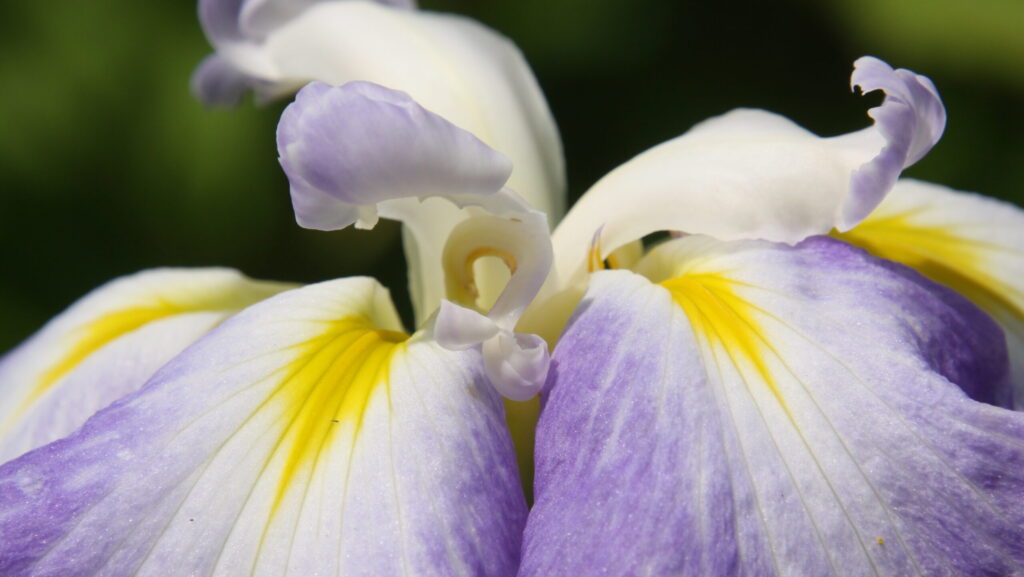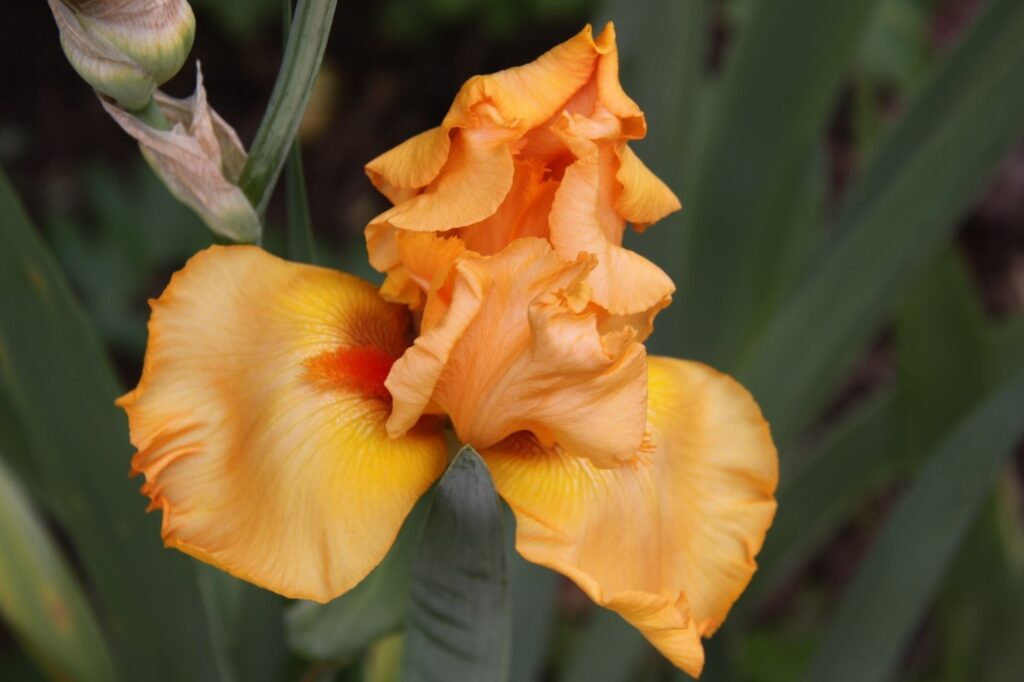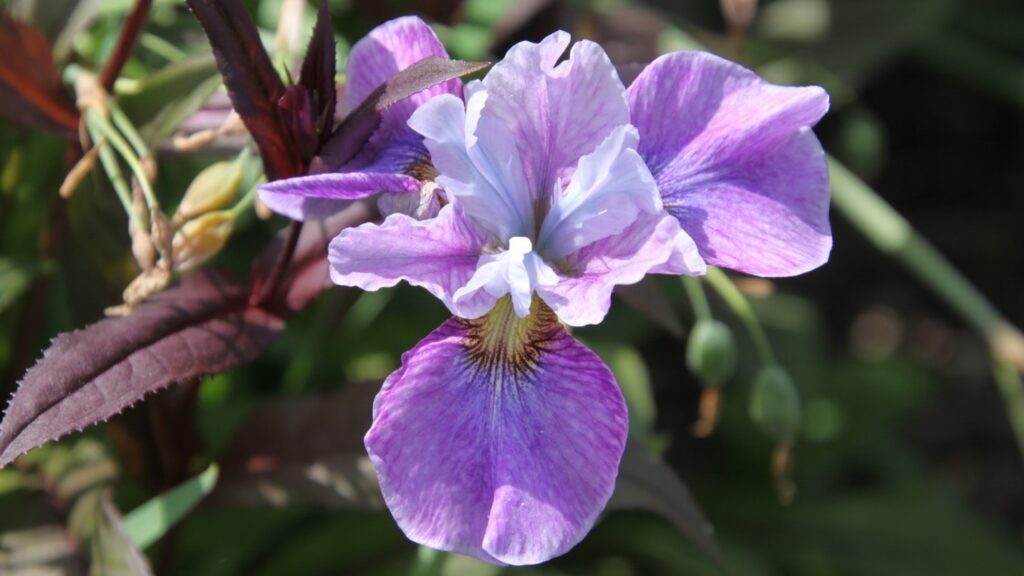
Iris season is upon us! There are over 300 species of this long-lived perennial around the world, with most native to temperate climates in North America, Europe, and Asia. This flower is a common decorative garden plant, blooming after spring-flowering bulbs but before many other garden favorites such as herbaceous peonies, phlox, and roses, to name a few. Irises can start blooming as early as March or April, although the majority will flower from mid-May to June. Certain species of iris possess remontancy, which means they may flower more than once during the growing season. In order to encourage blooming and prevent overcrowding in a garden, irises can be divided every 2 to 5 years. Offshoots can be divided from the rhizomes and transplanted in late summer to early fall, after the plants have finished blooming.
You can find 7 different iris species and hybrids and over 40 different varieties blooming throughout the Arboretum in the spring and summer. Some of our current favorites in bloom are Iris × germanica (tall bearded iris), Iris cristata (dwarf crested iris), and Iris sibirica (Siberian iris).

The tall bearded iris (such as Iris ‘Orange Harvest’ pictured above) is featured in the Rose and Fragrance Garden. There are more than 30 bearded iris cultivars in the Arboretum, producing an exciting variety of bloom colors, including yellow, orange, purple, blue, red, pink, and white. These showy, fragrant flowers are accompanied by narrow, linear leaves that typically grow to heights of 27 to 40 inches. The name bearded comes from the bushy “beard” that is easily identified in the middle of each fall (the three lower petals of the flower that hang down).
The dwarf crested iris (such as Iris cristata ‘Powder Blue Giant’) is noticeably smaller than the tall bearded iris, blooming earlier and reaching a maximum height of only 8 inches. This species has pale blue flowers with golden, crested ridges that bloom on short stems and can be found near the Overlook Pavilion and in the Childhood’s Gate Children’s Garden.
The Siberian iris (such as Iris ‘Caesar’s Brother’) is of hybrid origin, derived from two blue-flowered Asian species, Iris sibirica × Iris sanguinea. Take a trip to the Oasis Garden or the North Terrace to witness these deep purple beardless flowers before they are gone!

These flowers will continue blooming throughout late spring. Be on the lookout for more irises in the coming months, including the Japanese iris (such as Iris ensata ‘Ocean Mist’), which blooms from June to July, and the blackberry lily (Iris domestica ‘Hello Yellow’), which blooms from July to August. This iris is not a true lily, however the flowers give way to seed pods in late summer that resemble a blackberry-like seed cluster, hence its common name.


